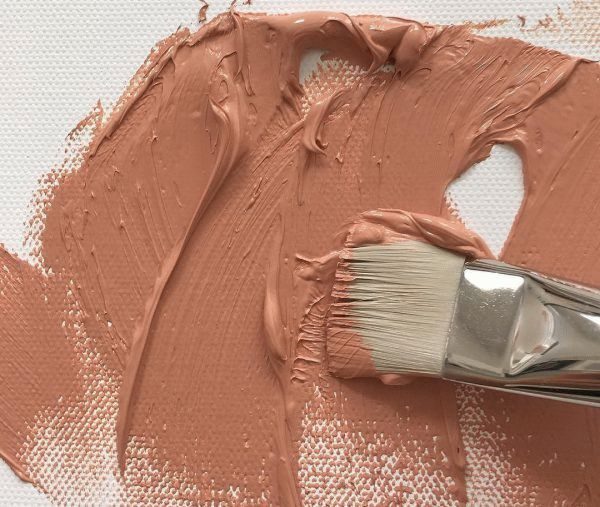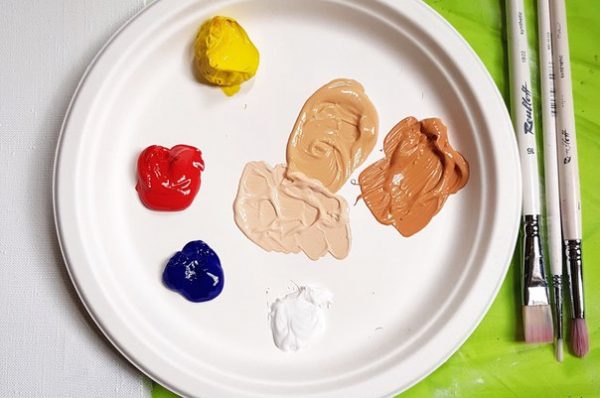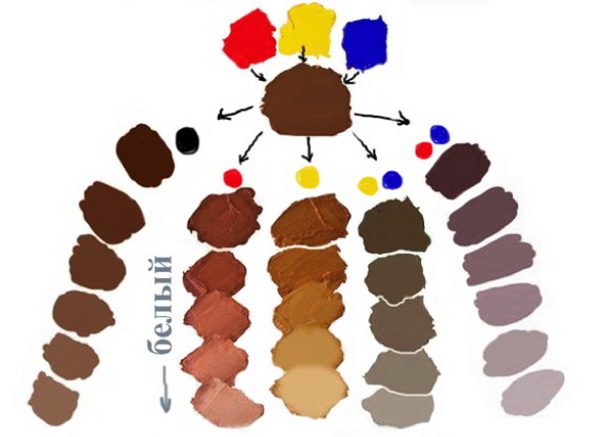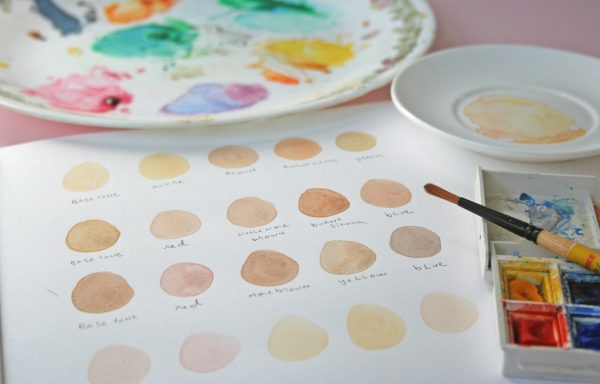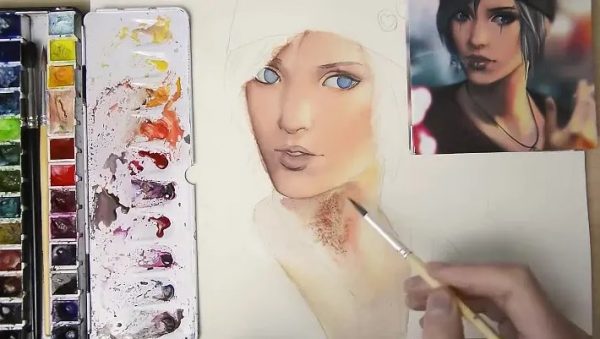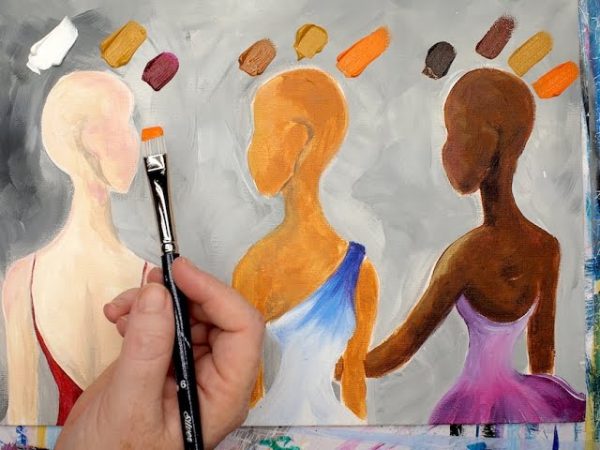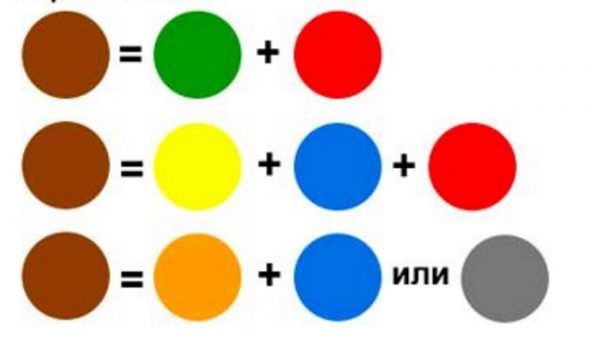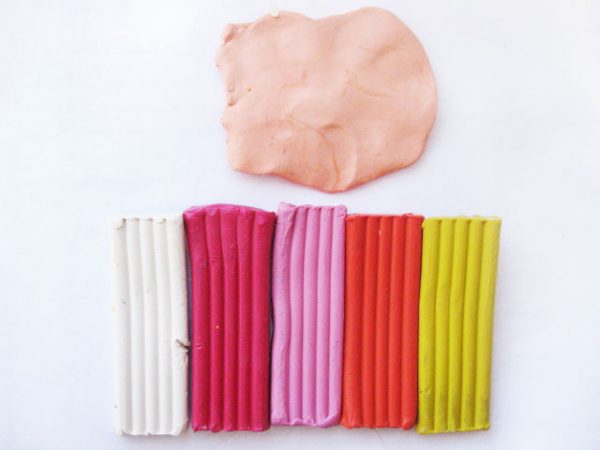Beginning portrait painters may face the problem of creating human faces with a realistic skin tone. If you make it too pale, the portrait will look unnatural, despite the blush imposed on top.
- General rules for getting flesh color
- Nuances to consider
- The best color combinations
- Examples of perfect complexion portraits
- Getting skin color by mixing inks
- Flesh color in watercolor
- How to make skin color with gouache
- Light skin tone
- Medium skin tone
- Dark skin tone
- How to get skin color from plasticine
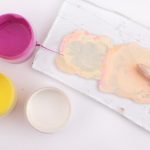
Experienced artists know very well how to get flesh color when mixing colors, so they can experiment with infinity with images.
General rules for getting flesh color
To make skin color close to natural, you have to try. The basis for its creation is white paint (white), which must be mixed with other shades. You can work with a variety of types of paints: gouache, watercolor, acrylic colors, even pencils, although professionals prefer to use oil on canvas.
There are four basic color types of humans, which are conditionally divided according to the seasons. They depend on the shade of the skin, eyes, hair. Winter color is lighter than summer, spring is brighter than autumn. But even in people with a winter color type, the skin is not pure white: it still has a delicate milky-beige tone. Therefore, you can make a flesh-colored color only by giving it a natural “leather” shade, for which such colors can appear in a mixture of colors:
- umber;
- sienna;
- ocher;
- red cadmium;
- yellow cadmium and others.
Nuances to consider
Unfortunately, the exact proportions for creating skin-colored paint do not exist. Each artist sees this shade differently, moreover, men and women of the same nationality usually have different complexion. Ladies can boast of light, silky skin, the stronger sex has a rougher, darker. The shade of the hands and feet is always darker than the tone of the face, and when the shadow falls (for example, from the hat) it must be made even more saturated.
Here are other tips that experienced artists give to beginners:
- If the color seems too dark, do not rush by introducing whitewash into it. This can lead to uneven tones, hiding the effect of the three-dimensional image. It is better to take a brush, wet it, then with the help of strokes to achieve the desired color right on the portrait.
- In advance, you must definitely try the shade that was obtained when mixing on a piece of paper, canvas, and wait until the paint has completely dried. Testing will help to avoid problems during the main work.
- Pink tones usually look quite dark on the palette, although they look more natural on paper. If we are talking about watercolors, after drying, the pinkish tint will become about 1/3 lighter.
- Human skin in an artistic image should consist of several layers, and not be performed by a single application of paint. Some shades are used for shade, others for halftones, still others for brightened areas. The gradual application of tones will save the drawing from possible flaws.
- The first base layer must be made translucent, while adding more white tone in the eye area.This will further help to create a greater contrast between the skin and eyes, because the shade of the latter should also not be pure white.
The best color combinations
If the drawing is done on paper, its white color will serve not only as a background, but also as a substitute for whitewash. The paper will shine through the strokes and give the paint the right tone. You can get skin color in this way:
- brush the tip of the brush a little over the red paint;
- dissolve the paint in a drop of water;
- add a little yellow color to a faint pink solution;
- start writing a portrait on white paper.
to contents ↑Also, artists often use the following "recipe" to create a skin tone: 6 parts of yellow paint are combined with 1 part of red, mix well, getting orange. Enter ½ part of the blue tint. The result of mixing is a brownish paint, which is diluted with white in the right proportion. The amount of white depends on the need: for a dark skin tone, they need less, for a light - more.
Examples of perfect complexion portraits
Many classic artists, portrait painters of our time perfectly created the natural complexion, body in their paintings. An example of the successful use of flesh color is the work of Rokotov, Levitsky, Bryullov. The youth, freshness of the girl’s skin in the painting by Borovikovsky “Portrait of Maria Lopukhina” is ideally expressed. Artists of our day, who make their masterpieces or reproductions, also know how to get flesh color by combining basic shades.
to contents ↑Getting skin color by mixing inks
To make skin color, it’s important to choose the right colors and create the right proportions. Otherwise, the finished tone will be far from perfect.
Flesh color in watercolor
Finding the right tones when working with watercolors for beginners often seems like a daunting task. Nevertheless, the principle will be the same: you just need to mix suitable paints together. Unlike oil colors, where whitening is used for highlighting, a white sheet of paper or ordinary water, with which paints are diluted, will play their role in watercolor. Thus, the manufacture of flesh color in watercolor almost never implies the use of white paint.
First you need to prepare tools and supplies. The latter include watercolors themselves, paper (cardboard), water. You will also need brushes, a white palette, which can be replaced with a plastic plate, a lid or even the paper itself, if only it does not absorb moisture too quickly. It is best to purchase special watercolor paper for painting that has a special coating.
The procedure for creating skin color is as follows:
- apply a tiny amount of red tone to the palette;
- introduce ocher (if it is absent, combine the usual yellow and a little brown);
- for a dark skin tone in the picture, add a slightly brown tone to the paint mixture, for a light one, leave everything unchanged;
- dilute the watercolor with water, but not too pale, because when it dries it will lose much in brightness.
The finished tone can be applied to areas depicting human skin, with their help the basic background is set. If the color comes out darker or lighter than necessary, this is not scary, the situation is easy to fix. Cold shades of skin color should not be entered, because even the lightest human skin creates a feeling of warmth. Further, professionals apply the technique of applying shadows, accents, highlighted areas, for which they use the most diverse colors (usually in strong dilution):
- blue;
- green;
- Gray;
- brown.
How to make skin color with gouache
Everyone can work with gouache. By mixing the tones, you can create any background, even solid, you need a basic set of colors.
Light skin tone
To prepare such a color for the first time seems difficult, because it should look natural, not too pale. Experts advise combining in equal parts such paints:
- blue
- yellow;
- red.
You can add a drop of each color to the palette, in a jar, any work surface, even strong cardboard, will do.After receiving the dark mass, you need to start to lighten it a little by adding white gouache. It is recommended to place a photo within the limits of visibility, a picture from which the portrait will be written to make the color as close as possible to it.
to contents ↑If the tone turns dark, you can still add yellow paint to it, and then continue to add white. Yellow color will give color to warmth, white - coldness. If the tone turns out to be unnatural, it is allowed to pour a little pink into it, but not to overdo it - otherwise, a feeling of too “ruddy” skin will appear. You can prepare several options, then choose the most suitable one for the picture.
Medium skin tone
This color is the most popular among artists, but creating it is somewhat more difficult. A large number of tones of paint will be required:
- blue;
- white;
- yellow;
- red;
- natural siena;
- burnt umber.
Initially, they act in a standard way: they apply a drop of each paint, except for white, to the white palette. Usually, equal parts of yellow and red are combined first to make orange. Then a drop of blue is injected, and then the same amount of other colors is added. As a result, the background should slightly resemble beige-olive, be dark, concentrated. After it is diluted with white to obtain the desired tone, which is compared with the original or brought to close to the idea.
to contents ↑Dark skin tone
To draw the darkest, darkest skin color, experiments are begun with natural sienna and burnt umber. These paints, belonging to the brown scale, are combined in equal parts, mixing thoroughly. Separately combine red and yellow colors to make orange.
Then they begin to gradually connect the two masses, comparing the shade with the original and bringing it closer to it. For a greater saturation add a little purple paint. The ideal option is to mix black, violet and dark gray tones in advance, and enter this color into the original mixture. It is only important not to abuse black or completely replace it with gray.
to contents ↑The finished base is diluted with whitewash, but to create a dark skin tone, white paint will require much less than in previous cases. To add naturalness to the finished material, you can add a little orange (optional). To draw shadows on such a solid background it is worth using gray shades of gouache.
How to get skin color from plasticine
Finding plasticine of natural flesh color in the store is not easy, usually it is not present in standard sets. You can make it yourself, most importantly - be patient. You need to take plasticine in such quantities:
- white is a whole piece;
- dark pink - no more than 1/10 of a piece;
- yellow - about 5% of the total volume.
Then you need to mix all the pieces into a homogeneous mass. It will take a long time to do this, otherwise there will be streaks in the clay. To darken the color, you can enter a little brown, blue, but only in a minimal amount. It is better not to add too bright colors, because when you get an unnatural shade, you will have to start work again.
The finished mass is "diluted" with white plasticine, once again mixing the material well. It can be used in creativity and even in animation - plasticine will look natural and will allow you to create the most original characters.

